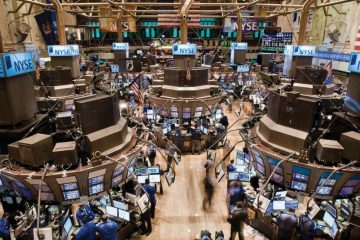The U.S. has a 60% of entering a recession in the next 12 months—the highest probability since the Great Recession.
That ‘s according to a team of Deutsche Bank analysts looking at the fact that the difference between yields for long-term and short-term bonds has been shrinking. A so-called flat yield curve, which is the term for when there isn’t much difference between short and long-term rates is often an indicator used by economists to predict an oncoming recession. Short-term interest rates have risen above long-term interest rates before each of the last seven recessions.
Typically, bonds with longer maturities have higher yields; bonds with shorter maturities, lower yields. When demand for a bond with a particular maturity rises however, its yield falls as the price of the underlying bond rises. Long-term U.S. Treasury bonds are viewed as something of a safe-haven—like gold. Investors also tend to flock to it when they expect economic weakness in the longer term alongside low inflation. So investors are willing to hold long-term bonds with lower yields because they expect future short-term rates to also fall as a result of looser monetary policy, needed to stimulate the economy in the event of a recession.
And in recent months, the gap between the three-month and 10-year Treasuries have begun to close rapidly—a signal to some investors that a recession may be on its way.
“This relentless flattening of the curve is worrisome,” the team of analysts led by Dominic Konstam wrote, referring to the graph that plots bonds of different maturities against their yields. “Given the historical tendency of a very flat or inverted yield curve to precede a U.S. recession, the odds of the next economic downturn are rising,”
The difference between long-term and short-term interest rates are also likely to get even tighter. Following the U.K.’s decision to leave the EU, investors have flocked to “safe havens” such as gold and sovereign bonds. The 10-year treasury note hit a record low of 1.375% on Tuesday, while the 30-year closed at 2.155%, another record low.
That being said, Deutsche Bank’s model probability of a recession model based on the yield curve had reached the low 70s prior to the last two recessions. What’s more, the Fed has been buying billions of dollars of longer-term bonds as well in the past few years to boost the economy. Some have suggested all that buying has altered the yield curve, and made it less reliable indicator.
Even before, while a downward sloping yield curve is a pretty reliable indicator of a coming recession, it has produced “false positives” in the past. And the yield curve is not actually downward sloping yet.
Meanwhile, using very similar data, the New York Federal Reserve has estimated an 8.1% chance of a recession in the next 12 months—no where near levels reached during past recessions. Deep breath people.











